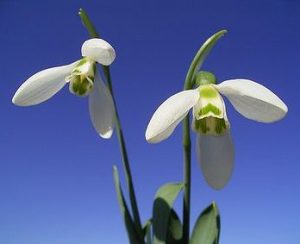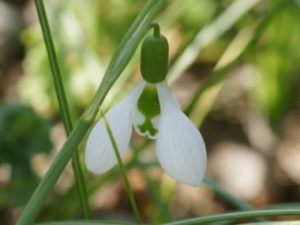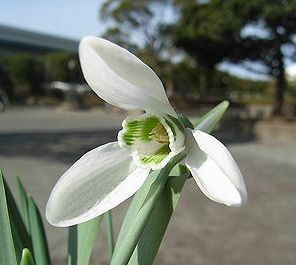本年5月1日の改元まで残り4か月。
The remaining 4 months until the revision of May 1 this year.
平成最後の年始。
Heisei's last new year.
皆さまにとって「平成の30年」はどんな時代でしたか。
What kind of era was "30 years of Heisei" for you?
ご家族にとってのビッグイベントはお子さんを
授かったことであることには 間違いないでしょう。
It is no doubt that the big event for your family is that you gave your child.
世の中はこの30年で大きく変化しました。
The world changed dramatically in the last 30 years.
「平成」はバブル経済絶頂からのスタート、
ノーベル賞受賞などの 明るいニュース、震災やテロなどの心痛むニュース、
リーマンショック、人の全ゲノム解読完了、企業においては
コーポレートガバナンスが 問われ続けました。
"Heisei" continued to be questioned about the start from the bubble economy culmination, bright news such as Nobel laureate, heart-sore news such as earthquake disaster and terrorism, Lehman shock, completion of whole human genome decoding, corporate corporate governance was questioned .
戦争体験者が減っていき、高度成長期に日本を
再建した方々は今や高齢者。
People who experienced war fewer and rebuilt Japan during the period of high growth are now elderly.
私たちは子どもたちに何を伝えていくべきか、
今一度考えるべき時でしょう。
It is time we should think about what we should tell the children.
子どもたちを取り巻く教育環境も変化し続けています。
The educational environment surrounding children continues to change.
大きく世の中を変えたデジタル革命から続くAI革命。
AI revolution that continues from the digital revolution which changed the world largely.
2045年の人間の知性をAIが超える
「シンギュラリティ」、 今0歳のお子さんは26歳で
迎えるのです。
AI exceeds human intelligence in 2045
"Singularity", a child 0 years old will be greeted by 26 years old.
これまでと求めるものに変化が生じ労働や学びの
再定義が必要となります。
Changes will arise so far, requiring redefinition of labor and learning.
知識や思考力よりもむしろ社会性や感情の育ちが
重要視されます。
Emphasis is placed on raising social and emotional rather than knowledge and thinking abilities.
「認知的能力」が知的な育ちを示すのに対し、意欲、意思、頑張る力など
学びに向かう力は「非認知能力」と関連があり、
人間力や生き抜く力として 生涯大切になる力です。
While "cognitive ability" shows intellectual growth, motivation, intention, ability to work hard The power towards learning is related to "non-cognitive ability", and it is the power to live for a lifetime as human power and survival force.
平成28年12月、中央教育審議会の答申で、
「幼稚園指導要領」において育みたい3つの
資質・能力の柱が示されました。
In December, in the report of the Central Education Council, the pillars of the three qualities and abilities he wanted to grow in "Kindergarten guidelines" were shown.
①知識及び技能の基礎、
① Foundations of knowledge and skills,
②思考力、判断力、表現力等の基礎、
② Fundamentals of thinking ability, judgment power, expression power,
③学びに向かう力、人間性等、です。
③ Force towards learning, human nature, etc.
特にこの③の主体性の育みには
「アクティブ・ラーニング」の視点が欠かせません。
Especially the viewpoint of "active learning" is indispensable for nurturing the subjectivity of ③.
益々グローバル化される社会において、
主体的・対話的な深い学び、 生涯にわたり能動的に
学び続ける姿、それはモンテッソーリ教育に通じます。
In societies that are increasingly globalized, they learn subjectively and interactively and learn actively throughout their lives, which leads to Montessori education.
実際、幼稚園指導要領、保育所保育指針は
モンテッソーリ教育理論を ふんだんに取り入れ
改正してきている、と先日の研修で学び納得しました。
In fact, I learned and learned from the other day training that the kindergarten guidelines, nursery school education guidelines have taken in plenty of Montessori education theory and amend it.
年の初めに教育の変遷と未来を見据え、
ひとたび確認をしていきたいと 思いました。
In anticipation of the change of education and the future at the beginning of the year, I wanted to confirm once.
本年もどうぞよろしくお願いします。
We also would appreciate your favor this year.
株式会社ウェルステート 顧問 橋本恵理
Eri Hashimoto adviser Wellstate Co., Ltd.
2019年 元旦 初日の出
First day sunrise of New Year's Day 2019 元旦の夕日を背に上空の窓からの富士山
元旦の夕日を背に上空の窓からの富士山
Mt' Fuji from the window of the sky with the sunset of New Year's back 1月1日の花言葉
1月1日の花言葉
Flowering words on January 1 「hope(希望)」「consolation(慰め)」 



誕生花 Snowdrop(スノードロップ)
Birth flower
和名『待雪草(マツユキソウ)』
Japanese name "snow grass (Matsuyukisou)"
花名の由来 スノードロップの学名は
Origin of flower name Scientific name of snowdrop is
「Galanthus nivalis(ガランサス・ニバリス)」。
属名「Galanthus(ガランサス)」はギリシア語で
「乳のように白い花」を 意味し、
種小名「nivalis(ニバリス)」はラテン語の
「雪(nivis)」を語源として「雪の中や近くに成長する」という意味があるといわれます。
The genus name "Galanthus (Galantus)" is Greek word "white flower like milk", species species name "nivalis" is a word derived from the Latin word "snow (nivis) It is said to have meaning to "grow nearby."
そこから英名では「スノードロップ(雪のしずく)」、 和名では「待雪草(マツユキソウ)」と呼ばれています。
From there it is called "Snow Drop (Snow Drop)" in English name, "Snow grass (Matsuyukisou)" in Japanese name.
花言葉の由来 花言葉の「希望」「慰め」は、
天使がアダムとイヴを慰めるため、 舞い落ちる雪を
スノードロップに変えたという言い伝えに
由来すると いわれます。
Origin of flower language It is said that "hope" and "comfort" of flower language originate from the legend that the angel comforted Adam and Eve, so that the snow falling down was changed to a snowdrop.
◇和名:待雪草(マツユキソウ) 冬から春にかけて
スノードロップが咲くので、 冬よりも「春を感じる花」と言われています。
◇ Japanese name: snow grass (Matsuyukisou) Since snowdrops bloom from winter to spring, it is said that "flowers feel spring" than in winter.
雪に色を 自分に色がない雪は、色を分けてくれるよう花々に頼みました。
Snow has no color in myself Snow has asked flowers to separate colors.
雪は断られてしまいますが、唯一それに応じたのが
スノードロップで あったといいます
Snow will be refused, but the only thing that responded to it is said to be a snowdrop
(ドイツの言い伝え)
(German legend)
春を告げる花 冬の終わりから春先(2月~3月ごろ)に
かけて花を咲かせるスノードロップは、
春を告げる花として知られます。
Flower to tell the spring Snowdrop that makes flowers bloom from the end of winter to early spring (February to March) is known as a flower telling the spring
日射しに春のきざしを感じるころ、 ひとつの茎に
ひとつずつ、釣鐘形の白い花をうつむくように
下向きに 咲かせます。
When I feel a sign of spring in the sunlight, I bake it downward so that the bell-shaped white flowers are drawn down one by one on one stem.
夜になるとその花を閉じ、日中に吸収したあたたかい
空気を溜め込みます。
At night it closes the flowers and collects the warm atmosphere absorbed during the day.

